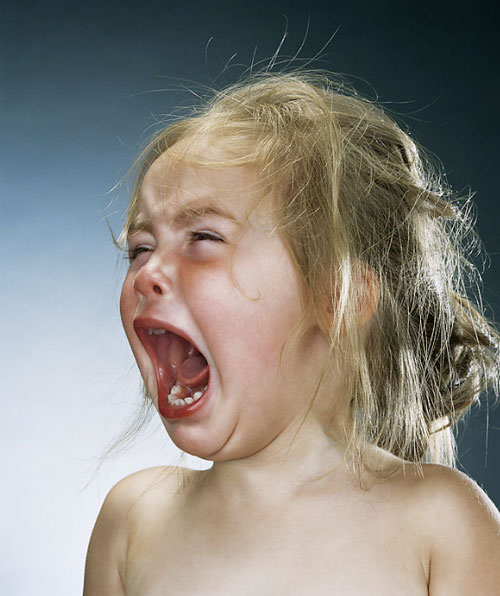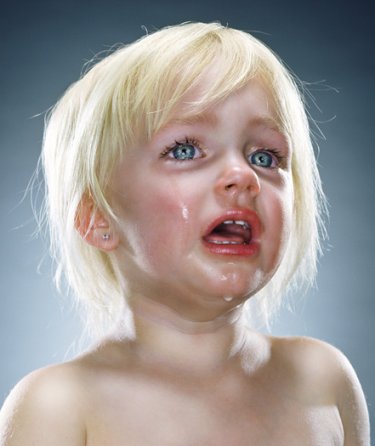Virgule
Art Reviews and Critical Essays by Ali EttehadVirgule
Art Reviews and Critical Essays by Ali EttehadAssociation of Form and Expression in End Time
An essay on Jill Greenberg`s works, Tandis magazine, No.91, 2007, Tehran, Iran.
______________________________________________________________________
Association
of Form and Expression in End Time
Ali Ettehad
End Times is the title for a collection of manipulated images by the American artist Jill Greenberg which were on exhibition in April 28th, 2006 in Los Angeles. Regarding its political view and harsh and caustic perspective, this collection was praised and complimented by elite societies all over the world and thus the exhibition was extended another four months. Jill Greenberg whose previous series ‘Monkey Portraits”, had garnered her significant fame and acceptance, entered into the circle of her contemporary radical artists. Her images are clear and saturated and set in a fluid atmosphere between reality and doxa. Greenberg was inspired by an essay by Bill Moyer’s “There is No Tomorrow”: "For the first time in our history, ideology and theology hold a monopoly of power in Washington. Theology asserts propositions that cannot be proven true; ideologues hold stoutly to a worldview despite being contradicted by what is generally accepted as reality. When ideology and theology couple, their offspring are not always bad but they are always blind. And there is the danger: voters and politicians alike, oblivious to the facts
With such an attitude toward American policy, Greenberg positions her crying children in the world of pain signs that can move to the farthest human geography and also calling up references to the children who have always been as the hopeful-life metaphors.
Such themes are discussed in this collection of images and the artist has also approved the influence of Moyer’s articles. These are the first ideas which come to mind. However the question is this: what has prevented this collection from being a commonplace political announcement? What has changed it to an impressive work of art?
Jill Greenberg images have always been associated with the term “manipulated” which is a keyword in this discussion. What makes the distinction between the manipulated images and other types of images is the element of truth and the amount of faithfulness in copying the image subject. Whenever the artist changes, moves and pastes to the initial image, we willy-nilly enter a new domain we can call the domain of manipulated images. Now we look at the images of “End Times” more carefully. Greenberg’s children are obviously suffering pain and injury, however with a little contemplation in the images we can see that the source for this pain is external and has little direct relation to the faces of the children. The artist with the help of her tools, she amends the structure of the works: elements like color density, light, and shade...has come to a new result which is far in distant with her first material. For instance, in image (1), by adjusting the distant elements and omitting color, I, the author of this essay, tried to reveal the structure of the initial image. It is obvious that in this new image the child’s countenance is more representing curiosity than suffering
The new function of faces in Greenberg’s collection are representation of multi-functional image language which, like a literary language is capable of creating various systems with limited elements. Further, when a face as a pictorial sign is used in a work of art, a huge group of presupposed and accepted systems, work simultaneously working and new languages like gesture permeate subject. As a result comparing the pictorial elements in abstract levels, this time we face more complications, since this new language game is the product of the conjunction of different layers of meaning. In Über Ästhetik, Wittgenstein says:" If I draw a meaningless curve and then draw another curve which is almost similar to the former, you will not notice the difference, but if I draw an image I call face and then draw another face with a little difference, you will rapidly notice that there is a distinction". Such conventions which refer us to predictable ideas, do not include training rules but are the results of a general and autonomous system which are formed self-growingly in the history of mankind. Art images have thus employed many of their functions. The collection of images which comprise our mental imagery bank, in an automatic process, cause us to search for an equivalent when encountering an object. Wittgenstein continues:” I draw some lines with a pencil and ask: who is he? And I get an answer like: He is Napoleon. We are never taught to call this sign Napoleon.”
Cleverly, Jill Greenberg
unconsciously benefit from this system and uses its methods to inspire the
meanings. Gesture signs which express feelings like indifference, shouting,
naughtiness, … in combination with elements making a crying face, make a
language game in which a face empty from genuineness is born. The changes in
relationships among structural elements put forth new ideas which are totally
different from the original ones. By locating in ideological systems which
Moyer has written his articles with their fear, Greenberg’s children welcome
ornaments on their face which do not own. And it is simply this contrast which
empties them from
genuineness. This emptiness of
genuineness appears as a nonperceptible visual shock and assists the artist in
compiling her announcement of protest, and creates an expressive work of art
which because of using visual and analogical signs, as an announcement, is
several steps above the usual political announcements
.jpg)
pic.1






























